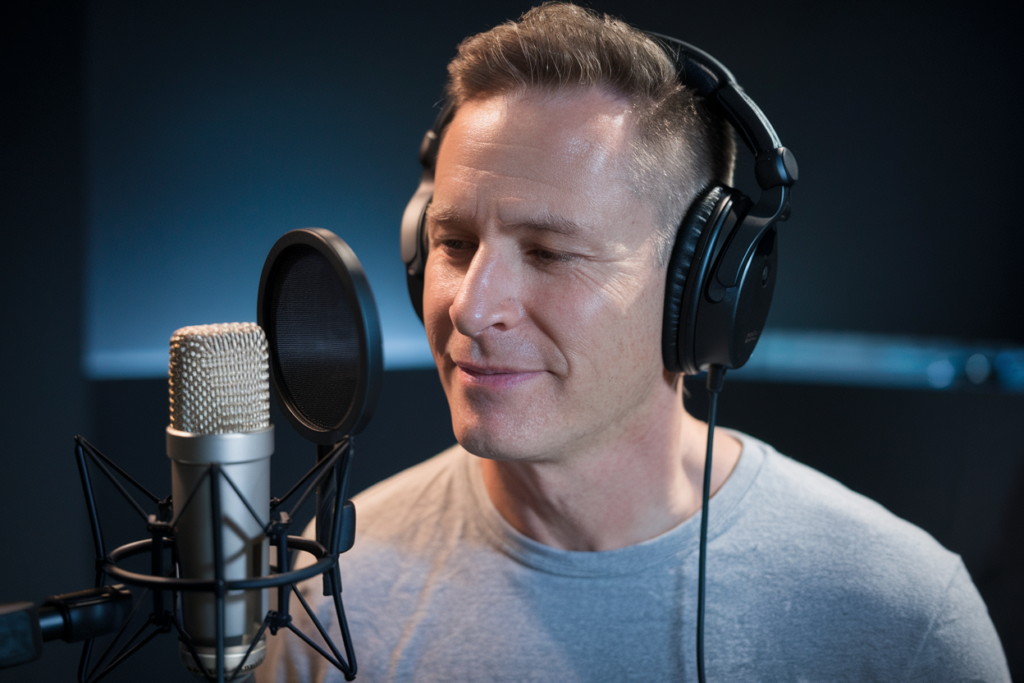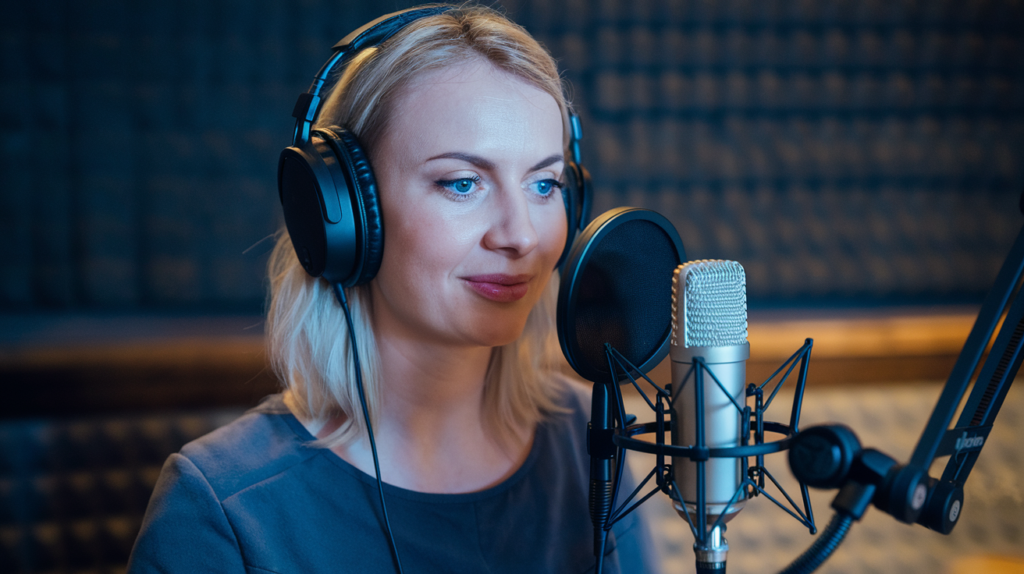Key Takeaways
- Voiceover Timing Synchronization is Essential: Proper synchronization between audio and visuals enhances audience comprehension and engagement, creating a more immersive experience.
- Impact on Audience Engagement: Effective timing fosters emotional involvement and helps maintain viewer attention, while misalignment can lead to confusion or distraction.
- Influence on Storytelling: Accurate timing contributes to narrative flow by setting the tone for scenes and ensuring that voice delivery matches character actions.
- Utilize Advanced Tools and Techniques: Employ software like Adobe Audition for visual alignment, combined with manual methods such as recording while watching visuals for natural pacing.
- Address Language-Specific Nuances: Recognize the unique structure of Polish when selecting voice talent to ensure clear articulation and proper pacing that aligns with visuals.
- Consider Cultural Contexts: Collaborate with voice artists familiar with Polish cultural expectations to enhance emotional delivery and avoid disconnects in messaging.
Ever wondered why some Polish voiceovers just feel right while others miss the mark? Voiceover timing synchronization is crucial in creating a seamless experience for your audience. When the audio aligns perfectly with visuals, it not only enhances comprehension but also keeps listeners engaged.
Understanding Voiceover Timing Synchronization
Voiceover timing synchronization plays a crucial role in creating an immersive experience for your audience. When the voiceover aligns seamlessly with visuals, it captures attention and enhances comprehension. Think about it: if the words don’t match the action on screen, confusion arises. This disconnection can lead to disengagement.
Timing involves precise coordination between audio cues and visual elements. For instance, when a character speaks on-screen, their dialogue should sync perfectly with mouth movements. This synchronization allows viewers to focus on the content rather than noticing discrepancies.
Selecting skilled voice talent ensures that you achieve optimal timing. A talented voice artist understands how to deliver lines at just the right pace and emotion, matching the rhythm of your project. Whether it’s for animation or corporate videos, proper synchronization elevates storytelling.
Moreover, consider different types of projects requiring distinct approaches to timing synchronization. Commercials often demand quick pacing to grab attention immediately, while documentaries might favor slower delivery for clarity and reflection.
Investing time into achieving flawless voiceover timing not only improves production quality but also fosters a stronger connection with your audience. Ultimately, this leads to more effective communication and lasting impressions of your message.
Importance Of Timing Synchronization In Voiceovers
Timing synchronization in voiceovers plays a crucial role in delivering an engaging experience. When audio aligns perfectly with visuals, it enhances audience comprehension and keeps them invested in the content.
Impact On Audience Engagement
Effective timing can significantly boost audience engagement. A well-synchronized voiceover ensures that your message resonates with viewers, capturing their attention from start to finish. For example, when a character’s dialogue matches their mouth movements seamlessly, it creates a more believable interaction. This connection fosters emotional involvement and encourages audiences to stay tuned.
Conversely, misalignment can lead to confusion or distraction. If the timing feels off—like an awkward pause or mismatched expressions—it detracts from the intended impact of your message. Investing time in perfecting this aspect allows you to create memorable experiences that leave a lasting impression on your audience.
Effects On Storytelling
Timing synchronization also influences storytelling effectiveness. The pacing of voiceovers contributes greatly to narrative flow; it sets the tone for scenes and helps convey emotions accurately. For instance, dramatic moments require careful delivery to heighten tension, while lighthearted sections benefit from a quicker pace.
Moreover, skilled voice artists understand how timing affects character development and plot progression. They adjust their performance based on the context of each scene, ensuring that every line lands precisely where it should within the story arc. This level of care transforms ordinary narratives into captivating tales that resonate with listeners long after they finish watching or listening.
Incorporating precise timing synchronization elevates both production quality and viewer satisfaction, making it essential for any project involving voiceovers.
Techniques For Achieving Synchronization
Achieving perfect synchronization in voiceovers enhances your project’s impact. Here are some effective techniques to consider.
Software Tools
Utilizing advanced software tools simplifies the timing synchronization process. Programs like Adobe Audition and Avid Pro Tools allow you to visually align audio with video tracks, making adjustments easier. These tools offer features such as waveform visualization, which helps identify key moments for precise syncing. Additionally, many editing platforms support multi-track functionality, enabling simultaneous adjustments across different layers of sound. You can also explore specialized voiceover software designed specifically for this purpose, ensuring optimal results.
Manual Synchronization Methods
Manual synchronization methods require a hands-on approach but can yield excellent outcomes. Start by analyzing the visual elements of your project; note where dialogue aligns with specific actions or expressions of your characters. Next, have your voice artist record their lines while watching the visuals closely; this technique encourages natural pacing and emotional delivery that matches on-screen moments.
You might find it helpful to use a metronome or timecode reference during recording sessions for consistency in timing. Afterward, review the footage while listening to the recorded audio multiple times—this iterative process allows you to make necessary adjustments until everything feels just right.
Combining both software tools and manual methods provides flexibility and precision in achieving seamless synchronization in your voiceovers.
Challenges In Voiceover Timing Synchronization In Polish
Voiceover timing synchronization in Polish presents unique challenges that can impact the effectiveness of your project. Understanding these hurdles is crucial for delivering high-quality voiceovers.
Language-Specific Nuances
Polish language structure differs significantly from English, affecting timing during voice recording. For instance, longer words or complex phrases may require more time to articulate clearly, which can disrupt synchronization with visuals. Additionally, stress and intonation patterns in Polish vary, influencing how a voice artist delivers lines. This nuance demands careful consideration when selecting your voice talent to ensure they grasp these subtleties while maintaining natural pacing.
Cultural Considerations
Cultural context plays a vital role in voiceover timing as well. Polish audiences expect specific emotional deliveries based on cultural norms and values. A voice actor must not only synchronize their dialogue with visuals but also resonate with the audience’s expectations regarding tone and emotion. Misalignment between delivery style and cultural understanding can detract from the overall message and diminish viewer engagement. Thus, collaborating with a skilled voice over artist familiar with these cultural nuances ensures that your project connects effectively with its intended audience.
Best Practices For Effective Synchronization
Achieving effective synchronization in voiceovers relies on several best practices. You can enhance your projects significantly by following these guidelines.
- Choose the Right Voice Talent
Selecting skilled voice artists is crucial. Look for voice actors who understand pacing and emotional delivery, as they can adapt their performances to match visual cues seamlessly.
- Utilize Advanced Software Tools
Employ software like Adobe Audition or Avid Pro Tools. These tools offer features such as waveform visualization and multi-track functionality, which simplify the timing synchronization process.
- Incorporate Manual Techniques
Don’t underestimate manual methods. Recording while closely watching the visuals allows voice artists to adjust their timing naturally, ensuring that dialogue flows with the action on screen.
- Focus on Language Nuances
When working with Polish, consider its unique language structure. Longer words and complex phrases may disrupt synchronization, so choose talent who articulates clearly while maintaining a natural rhythm.
- Understand Cultural Contexts
Recognizing cultural nuances is vital for audience connection. Work with voice over talent familiar with Polish expectations regarding emotion and tone to avoid misalignment that could detract from your message.
- Test Sync Prior to Finalizing
Conduct tests before finalizing any project. Listening closely during playback helps identify any discrepancies between audio and visuals, allowing you to make necessary adjustments early in the process.
- Communicate Clearly With Your Team
Maintain open lines of communication among everyone involved—voice artists, directors, and producers alike—to ensure everyone’s aligned on goals for timing and emotional delivery.
By implementing these best practices consistently across your projects, you create polished voiceovers that resonate effectively with audiences while enhancing overall production quality.
Conclusion
Mastering voiceover timing synchronization in Polish is essential for creating impactful media. By prioritizing precise alignment between audio and visuals you elevate audience engagement and comprehension. When you select skilled voice artists who understand the nuances of pacing and emotional delivery you’re setting the stage for success.
Utilizing advanced software alongside manual techniques allows for greater flexibility in achieving seamless synchronization. Remember to consider language-specific challenges and cultural contexts that can affect your project’s effectiveness. With focused attention on these elements you can craft voiceovers that not only resonate with your audience but also leave a lasting impression. Embrace these best practices to enhance your production quality and strengthen connections with viewers.
Frequently Asked Questions
What is voiceover timing synchronization?
Voiceover timing synchronization refers to the precise alignment of audio with visual elements in a project. It ensures that dialogue matches the characters’ mouth movements and other relevant actions, enhancing audience comprehension and engagement.
Why is timing important in Polish voiceovers?
Timing is crucial in Polish voiceovers because misalignment can lead to confusion and disengagement. Proper synchronization boosts storytelling effectiveness, emotional delivery, and overall audience connection by creating a seamless experience.
How do software tools assist in timing synchronization?
Software tools like Adobe Audition and Avid Pro Tools provide features such as waveform visualization and multi-track functionality that simplify the process of achieving accurate timing synchronization between audio and visuals.
What are some challenges of synchronizing Polish voiceovers?
Challenges include language-specific nuances, longer words, and complex phrases that can disrupt sync. Additionally, cultural context affects emotional delivery expectations among Polish audiences, making it essential to choose skilled voice talent familiar with these aspects.
What best practices should be followed for effective synchronization?
Best practices include selecting suitable voice talent who understands pacing, using advanced software tools for easier sync adjustments, incorporating manual techniques for natural timing, conducting sync tests before finalization, and maintaining clear team communication.







